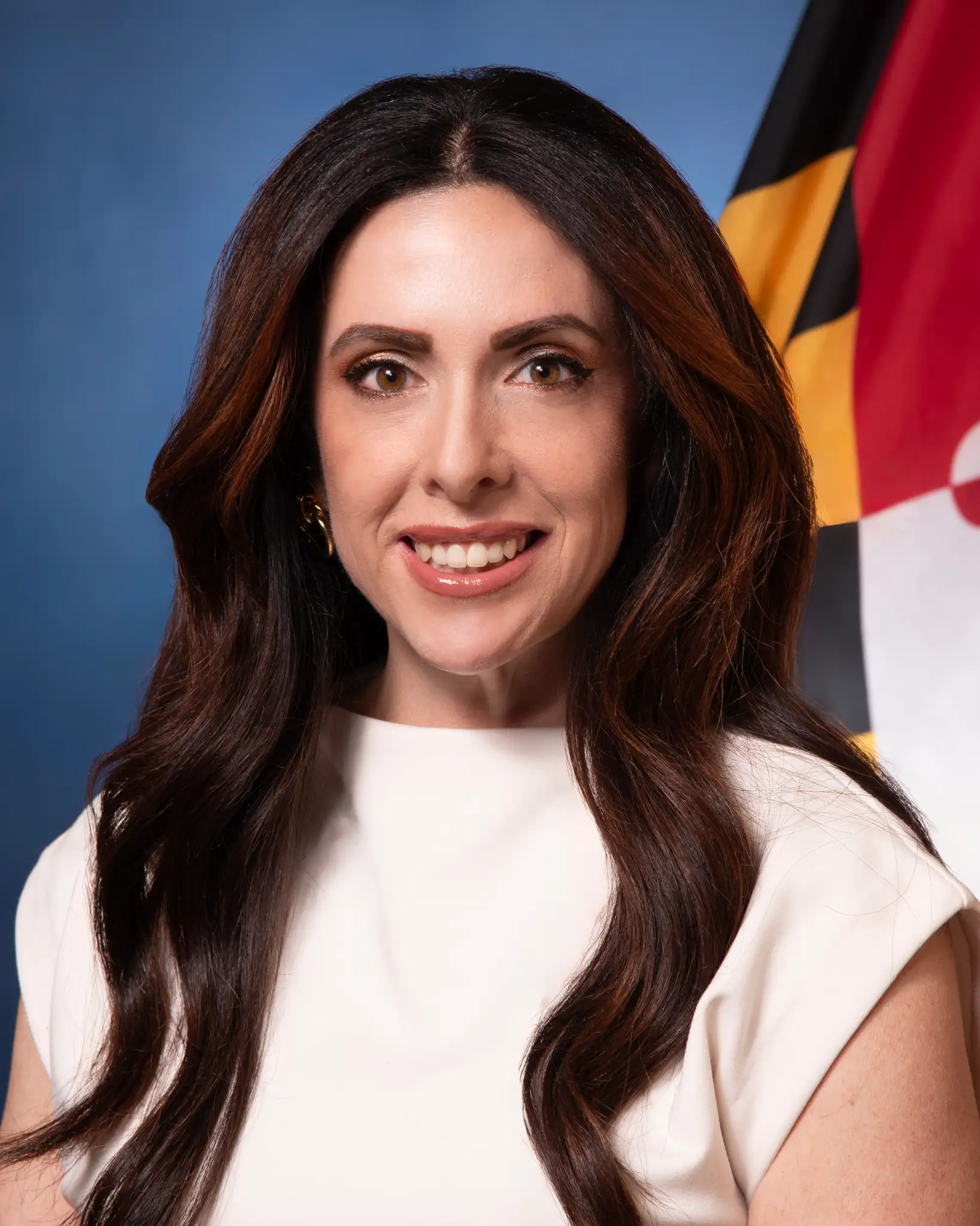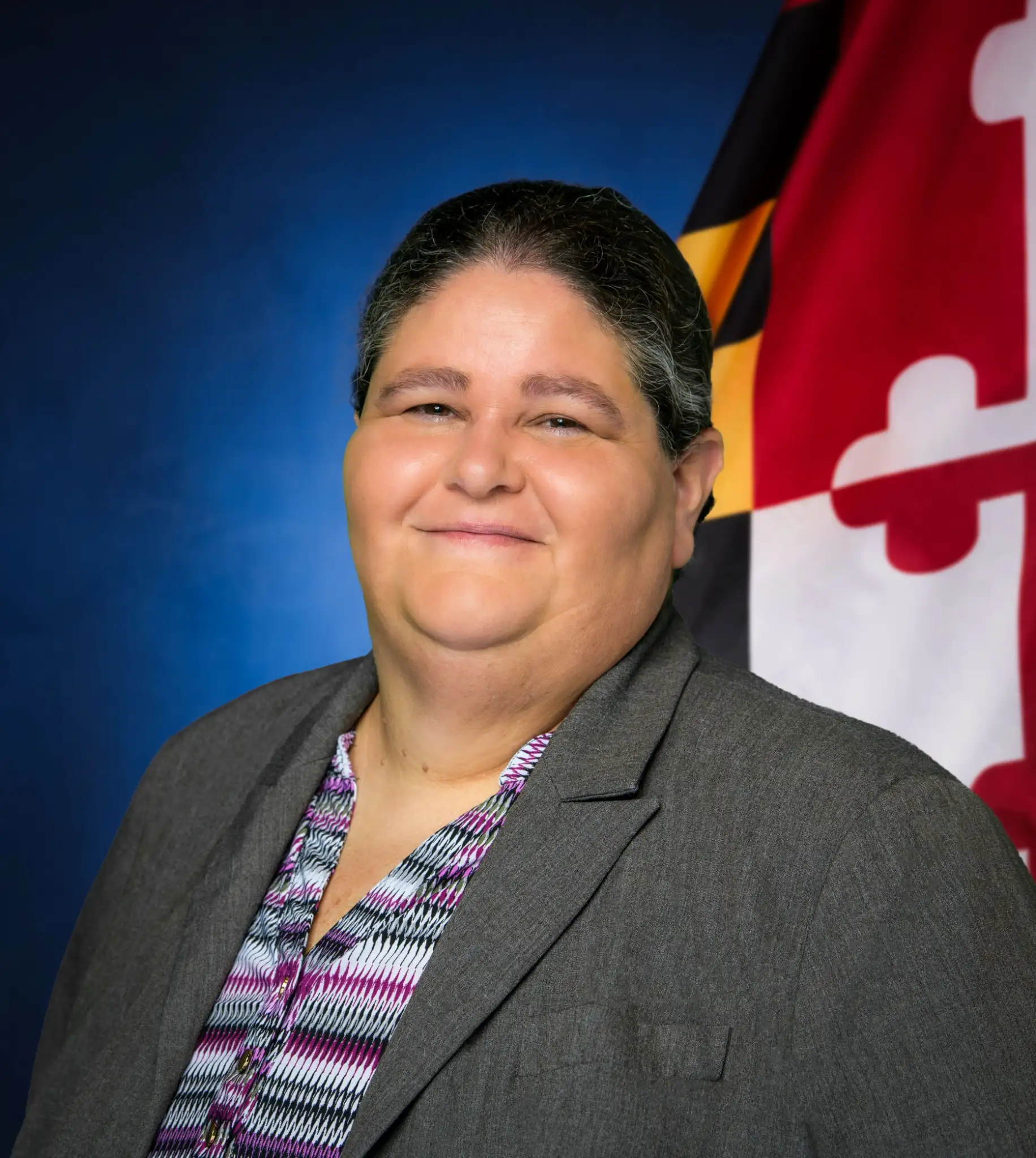Samantha J. Biddle, Acting Transportation Secretary
Maryland Department of Transportation
Maryland Department of Transportation
Learn about The Maryland Department of Transportation, including Key Projects and The Team.
Have questions? Reach out to us directly.
Learn about The Maryland Department of Transportation, including Key Projects and The Team.
The Maryland Department of Transportation (MDOT) is an organization comprised of five modes and one Authority. They are: MDOT State Highway Administration, MDOT Maryland Transit Administration, MDOT Motor Vehicle Administration, MDOT Maryland Port Administration, MDOT Maryland Aviation Administration and the Maryland Transportation Authority. This unique approach provides the state’s leadership with the ability to develop a coordinated and balanced approach to transportation.
The Maryland Department of Transportation presents six goals that support the achievement of MDOT's Vision and Mission. These goals will guide MDOT in tackling the State's biggest transportation challenges over the next 20 years.

Appetite for Maryland's credits is set for another test Oct. 8 as the Department of Transportation comes to market with over $800 million offered in a competitive sale as required by statute.
"Under Maryland state law, the Department's bond issues are preferred to be conducted on a competitive basis unless the Secretary determines that extraordinary market conditions exist," said David Broughton, media relations manager for MDOT's Office of Public Affairs.
"Based on recent successful competitive sales, the Department did not feel the need to request an exception for these bonds."
The sale is divided into two tranches, with $345 million designated as Consolidated Transportation Bonds Series 2025B. The second half accounts for $497.7 million of Consolidated Transportation Bonds Series 2025C Refunding. All the bonds are tax exempt with an 8-year par call
Any new paper coming out of Maryland is well scrutinized for signs of trouble ever since the state was knocked by a credit downgrade to its issuer rating, and General Obligation bonds to Aa1 from Aaa by Moody's Ratings in May.
"The bonds should receive strong institutional reception despite an earlier downgrade on the state as well as on linked DOT bonds," said Jeff Lipton, The Bond Buyer's market intelligence analyst for municipals.
"Buyside credit approval should not be a heavy lift given the statutorily imposed basket of irrevocably pledged, state-collected taxes and fees before being made available for other uses, subject to deposit to the state's Transportation Trust Fund and exhibiting a proven collection track record."
Proceeds from the 2025 B Bonds will provide a portion of the capital funds needed for the Consolidated Transportation Program. Proceeds from the 2025 C Bonds will be used to refund certain maturities of outstanding Consolidated Transportation Bonds.
McKennon Shelton & Henn LLP in Baltimore is serving as the bond counsel, Davenport & Company LLC are the municipal advisors.
The deal is rated AAA by S&P Global Ratings, Aa1 by Moody's Ratings and AA+ by Fitch.
"The rating reflects limited growth prospects for the various dedicated taxes and robust resilience of the structure to economic declines," said Fitch."Fitch's analysis is based on maximum anticipated leverage for all bonds that could draw on the dedicated taxes." Market watchers are predicting the bonds will have a smooth ride."The market response should be relatively strong as there is not a tremendous secondary market float of Maryland paper currently," said Michael Pietronico, founding partner at Miller Tabak Asset Management.
Going with a competitive sale could also provide a clearer picture of demand in the market.
"To the extent there is any give in the pricing of the bonds, logic would dictate it will be less in the case of a competitive sale of a very good name than a negotiated issue," said John Mousseau, vice chairman and CIO for Cumberland Advisors.
The current federal government shutdown could also play a role.
"A cursory look at government shutdowns that last more than 10 days tend to reflect a drop in interest rates, at least by the ten-year Treasury," Mousseau added.
"If you have this backdrop, this will increase demand by investors' outlook of a directional trade and demand for high quality issuers."
MDOT's last foray into the market was successful.
"The Department successfully sold $200 million of Consolidated Transportation Bonds competitively in June with five underwriters submitting bids," said Broughton. "All bids received had a low-high True Interest Cost spread of less than 9 basis points."
The successful sales of the past and the present are happening under dark financial clouds emanating from nearby Washington D.C. due to the Trump administration's efforts to cut the federal workforce.
The Maryland Association of Counties pegs the number at 15,000 lost federal jobs since January. Governor Wes Moore is also feuding with the Trump administration over the cost and who is paying for rebuilding the state-tolled Francis Scott Key Bridge in Baltimore.
The municipal bond market is flying high as primary market municipal issuance is on track to set another record in 2025, and October sales are expected to exceed $50 billion.
"This tightening supply environment for the end of the year means investors will face more competition for quality bonds," writes Tom Kozlik, managing director and head of public policy and municipal strategy for Hilltop Securities."Individual investors, in particular, may find it more challenging to access attractive offerings."
Additional Revenues Enable Increased Federal Matching Funds
HANOVER, MD (September 2, 2025) – The Maryland Department of Transportation today released its Draft Consolidated Transportation Program (CTP) for Fiscal Years 2026 to 2031, outlining a $21.5 billion balanced plan to further enhance safety, keep the system in working order and support the state’s economy. Thanks to Governor Moore’s budget and the approximately $400 million in additional annual revenues passed by the General Assembly, the Department was able to use state dollars as a match to acquire additional federal funding in the previous Final CTP for Fiscal Years 2025-2030. That continued effort to match federal funding has resulted in an increase in this year’s draft program of nearly $300 million total compared to the Final CTP.
“This capital budget focuses on our priorities of enhancing safety, maintaining our system and driving economic growth,” said Acting Maryland Department of Transportation Secretary Samantha J. Biddle. “Thanks to Governor Moore's leadership and the General Assembly’s commitment to transportation funding, the additional revenues allow us to continue to advance projects that achieve these goals.”
The Draft Fiscal Year 2026-2031 CTP shows the Department is strategically using available resources and focusing on data-driven investments to advance Maryland’s goals. The $21.5 billion program includes key investments across all transportation modes:
Transit Reinvestment: Significant reinvestment in the Maryland Transit Administration’s core service includes rehabilitation and modernization of the central light rail line.
State Highway Network Improvements: Major investments include corridor upgrades along US 15 in Frederick County and I-81 in Washington County. The Draft CTP also prioritizes safety enhancements for pedestrians and vulnerable road users, along with vital system preservation projects statewide.
Aviation and Port Projects: Key projects include a new air traffic control tower at Martin State Airport and continued investment in modernization efforts at the Port of Baltimore’s Dundalk Marine Terminal, along with ecosystem restoration and dredging programs.
Local Transportation Support: The Draft CTP maintains critical funding for local projects through Highway User Revenues (HUR) and Locally Operated Transit Systems (LOTS) grants.
Federally Leveraged Projects Advancing to Construction: Several projects are advancing to construction this year with the help of federal matching funds, including:
The I-97 project in Anne Arundel County to add an additional lane in each direction and improve safety along the heavily traveled corridor.
The MD 5- Great Mills project in St. Mary’s County to address mobility and accessibility needs and replace the bridge over the Saint Mary’s River.
The MD 97- Montgomery Hills project in Montgomery County to enhance safety and improve bicycle and pedestrian connectivity.
James Island phased restoration, as a part of the Port of Baltimore’s Mid-Bay Chesapeake Bay Island project to use dredge material to rebuild barrier islands.
A range of Complete Streets projects enhancing safety and multimodal access across the state.
The six-year Draft CTP outlines capital investments in each mode funded by the Transportation Trust Fund: Maryland Aviation Administration, Maryland Port Administration, Maryland Transit Administration, Motor Vehicle Administration, State Highway Administration and The Secretary's Office, as well as Maryland's investment in the Washington Metropolitan Area Transit Authority. The Maryland Transportation Authority's toll facilities are financed, constructed, operated and maintained with toll revenues paid by customers using those facilities and represent an additional $5 billion investment in the State's transportation system in fiscal years 2026-2031.
To view the full Draft Fiscal Year 2026-2031 Consolidated Transportation Program, go to ctp.maryland.gov.
The release of the draft program launches the Maryland Department of Transportation's public engagement process that includes a meeting in every Maryland county and Baltimore City to receive input from local officials and the public. This year’s tour is scheduled to take place between September and November with local jurisdictions hosting the meetings. Dates and locations can be found here. The schedule is subject to change and will be updated as needed throughout the process.
Following the tour, the Maryland Department of Transportation will finalize the Draft CTP and submit the Final Fiscal Year 2026-2031 CTP to the Legislature in January for consideration during the 2026 General Assembly session.
FOR IMMEDIATE RELEASE:
Contact: Maryland Department of Transportation Public Affairs
David Broughton, 410-599-9428
Final Consolidated Transportation Program Prioritizes Safety, Reliability, Utilizing All Federal Funds and Seeks to Drive Economic Growth Statewide
HANOVER, MD (January 15, 2025) – The Maryland Department of Transportation today released its $21.2 billion Final Consolidated Transportation Program (CTP) for Fiscal Years 2025-2030, fully funding and reviving projects that prioritize safety and reliability while driving economic growth statewide. The balanced plan includes an additional $420 million in state transportation funding annually, beginning in Fiscal Year 2026. This investment allows the Department to fully leverage all available federal funding and financing, turning a $420 million annual state investment into $695 million annually of new resources for the State’s transportation network. Furthermore, it enables the Department to meet state of good repair investment levels, ensuring safe and reliable access to opportunity for more Marylanders.
“Maryland deserves and demands to have a safe and reliable transportation system that is accessible for all to use and helps drive our ability to make this Maryland’s decade,” said Maryland Transportation Secretary Paul J. Wiedefeld. “With a focus on enhancing safety, equity and sustainability, this Final CTP makes statewide strategic investments that strengthen our existing system to efficiently serve all Marylanders and grow the state’s economy. Thank you to Governor Moore for his leadership and vision in providing this vital investment in our state’s transportation system.”
With the Final CTP for Fiscal Years 2025-2030, the Department is making targeted investments in safety, system preservation, utilizing all available federal funding, growing our economy and working to make Maryland more competitive and affordable. The release of the Final CTP also reflects an extensive statewide public engagement process with a meeting in every Maryland county and Baltimore City to receive input from local officials and the public.
Highlights of the more than $21 billion program include:
The additional $420 million annually in funding puts the Department on firm fiscal footing, supporting its operating budget and debt service coverage. Addressing the Department’s debt service needs is important because it will help the Department maintain its AAA credit ratings and strong financial management practices. The additional funding will be divided into supporting:
The six-year Final CTP outlines capital investments in each mode funded by the Transportation Trust Fund: Maryland Aviation Administration, Maryland Port Administration, Maryland Transit Administration, Motor Vehicle Administration, State Highway Administration and The Secretary's Office, as well as Maryland's investment in the Washington Metropolitan Area Transit Authority. The Maryland Transportation Authority's toll facilities are financed, constructed, operated and maintained with toll revenues paid by customers using those facilities.
When Governor Moore came into office, the state’s transportation system was facing serious disinvestment – particularly in public transit. More than $3 billion in one-time federal COVID relief dollars kept critical services moving but when those dollars went away, the deep issues within the state’s transportation trust fund remained. This additional funding in the state’s transportation system will help the Department make this Maryland’s decade through targeted investments in a reliable and safe infrastructure system that protects lives and drives economic growth.



Have questions? Reach out to us directly.